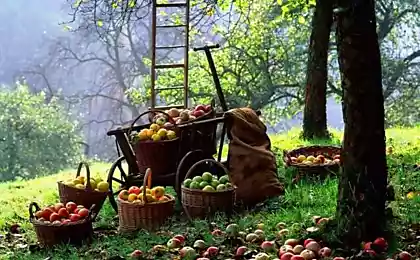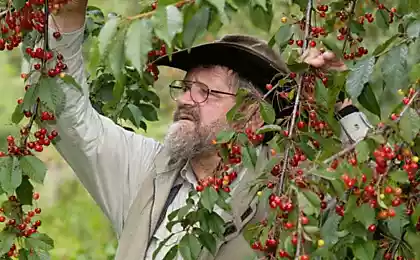434
Sepp Holzer: the Key rules of irrigation

• Create a healthy water balance is much more important and more effective than any irrigation. In this case, the area will be quite rosy, and with it a sufficient amount of vegetation. Vegetation, in turn, will protect the soil from dehydration. How to bring into balance water resources, described in detail in the section "Regulation of water balance, the creation of water landscapes".
• Overall I would recommend as little AS POSSIBLE to WATER. Most gardeners and farmers are watering too often and too abundantly. From this plant become dependent and require a new portion of water. Of course, after planting the plants can be abundantly watered in order to survive, but later watering should be reduced. Due to this the plants will become independent, their roots will grow deeper, because they will seek water and the plant will get nutrients from lower soil layers. That's the way plants take part in the formation of saturated, aerated, permeated with roots of the body of the earth, which is so necessary for full development.
• Due to the presence of year-round vegetative cover can reduce water consumption. In this case, the best is a stepped structure plantings, where the plants shade and support each other (this was referred to in the section "Crater garden").
• Mulching is a great way to protect the ground from dehydration for a period of time until vegetation has not yet formed. For this fit leaves, straw or any other organic material you have on hand, even cardboard and old clothes made of natural fabrics (no synthetic fibers). Tree trunks fruit tree should be covered with a thick layer of mulch. The best time for mulching the beds immediately after sowing or planting. In this case, the mulch will inhibit the growth of accompanying weeds, the seeds will germinate under a cover of mulch, and the shoots can easily break through the loose mulch litter. After seed germination mulching of the soil has not been held.
• The water never pour on the plants above. Irrigation and sprin-Chernye installation, though are fairly common, it's just a wrong investment. Why? Using such a setup, I give the wrong message to the plants and the soil — it's not real rain. The soil is in a hurry to open up, to absorb the moisture. Then the machine suddenly powers down, the soil is still open, and the water will evaporate and the ground to dry. Moreover, sprinklers cause damage to the leaves and contribute to the formation of mildew. If this is too high irrigation water consumption and water requirement of plants. Another disadvantage of frequent watering is leaching nutrients from the soil: the water flushes them away from the roots of plants and moves to where the roots until they can not be reached. This is how the best soils are leached as a result of applying irrigation and sprin-Chernyh plants, and the nutrients get into the ground water. That is why watering should always be carried out only on the surface of the earth at the expense of the traditional system of channels and drip irrigation directly to tree trunks round the plants. Drip irrigation hose can be laid in the ground and on the surface of the soil. Of course, watering is carried out only in the evening.
• Watering only after sunset and never during the day. If daily temperatures and low humidity, plants can absorb only a small part of the water. Conductive channels of plants otkryvayutsya, and soon the water evaporates again. But at night the temperature is lower and humidity higher than during the day, so the plants and soil will be able much longer to keep and make better use of moisture.
• Even when the plants look a little wilted, I'm not panicking. Leave the leaves in this state is also a kind of training to develop a protective mechanism of plants, because they will evaporate less moisture. If you start frantically splashing water on him, then disable watering, and then another on top and the sun will be out, you can achieve the opposite effect: the plant will close without pre-alarm "high humidity", and the water will just roll on it and not vetasses. When the plant finally opens for moisture, I with my hose shall be far away, and the sun still shines, and as a result the leaves lose moisture, which I actually tried to hold it.
• Grain crops do not need watering except in very arid regions. Planted as seeding vegetative cover, such as white clover, will protect the ground from dehydration and improve the quality of the soil, as these plants are cover crops with deep root system.
• To care for areas in extremely arid regions, in areas threatened with desertification, and on sandy soils, I suggest using
buried in the ground wood, which attracts moisture. To do this, I'm digging the groove and put it in her timber and branches, covered with earth and planted or sown on top of or next to the groove of their culture. Such grooves with the filling you can also lay at the foot of the hilly ridges, wood will be humus. Decaying wood attracts moisture and absorbs it like a sponge. Planted on top of the plants, this moisture will only benefit. published
Sepp Holzer's "Desert or Paradise"
Source: vk.com/pervorod?w=wall-48124846_30225























